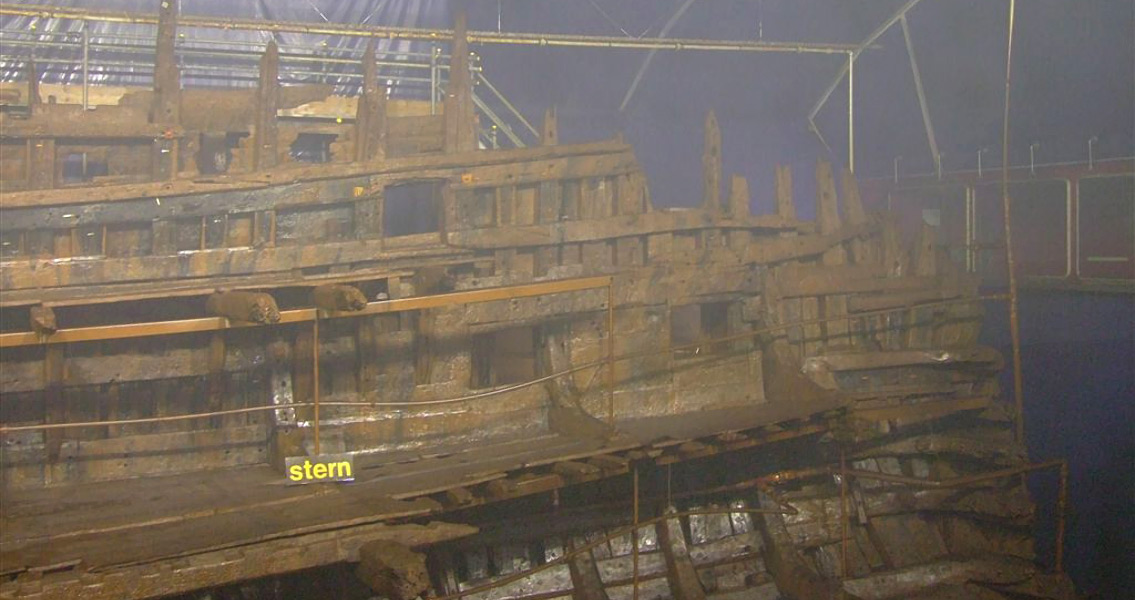<![CDATA[Analysis of cod bones found on the Mary Rose, a sixteenth century shipwreck, has revealed that some of the fish came from as far away as Newfoundland, evidence that England needed more than its own fisheries could produce to provision its navy. The authors of the research, from the universities of Cambridge, York, and Hull, argue that navy provisioning was a major driver of the globalisation of fishing. In a paper published in the journal Royal Society Open Science, the authors detail the results from tests including DNA comparison and analysis of stable carbon and nitrogen isotopes, which showed some of the fish stored on the Mary Rose were caught in the North Sea, close to the fishing grounds of Iceland, as well as in the waters around Newfoundland. The evidence was supported by control samples of cod bones from these areas, the paper reads. The authors worked with eleven cod bone samples taken from all of Mary Rose’s holds. These bones were then tested for stable isotopes, which can yield information about the characteristics of the environment a fish lived in as well as its diet, Heritage Daily explains, and DNA analysis, which reveals genetic drift and flow, and natural selection. The results of these two types of testing were then cross-referenced for better accuracy and were also compared to historical records from the time. Three of the bones were most likely fished in the northern parts of the North Sea, another seven came from the waters around Iceland, and one was suggested to have been from cod from Newfoundland. Given that a fishing trip to Iceland took three to six months in Tudor times, one could very well imagine the discrepancy between demand and local supply that would have forced people to travel as far as Newfoundland for cod. Talking to Heritage Daily about the implications of the findings, James Barrett from the McDonald Institute of Archaeological Research at the University of Cambridge explained that the evidence suggests a growing and increasingly urban population in Tudor England that needed to be fed, as well as a growing navy that needed provisioning. The fisheries in England and Ireland did not have the capacity to satisfy this greater demand, so people turned to overseas fisheries. This fishing expansion, in turn, fuelled the growth and development of the navy, and this growing, stronger navy later served to help sustain these long-distance fisheries. Barrett also noted that Newfoundland first started being used as a fishing spot by the English at the start of the sixteenth century, after the 1497 voyage of John Cabot across the Atlantic. The area was used by English, Portuguese, Spanish, and French fishermen. Just a hundred years later, the place had become a major source of fish, and was valued more than the fur trade. The Mary Rose, a warship that sank near southern England in 1545, was built in 1510 and for some time served as Henry VIII’s flagship. The ship sank for no apparent reason, during a battle with the French in the Solent channel, with almost the whole crew drowning. The shipwreck was discovered in the 1970s and brought to the surface in 1982. With its holds full of provisions, the remains of the ship are extremely valuable for historians, as they represent a sort of a time capsule from Tudor times. For more information: ”The globalization of naval provisioning: ancient DNA and stable isotope analyses of stored cod from the wreck of the Mary Rose, AD 1545 ” Image courtesy of Wikimedia Commons user: Leslie James Chatfield]]>
Navy Drove Fishing Globalisation in 16th Century England
